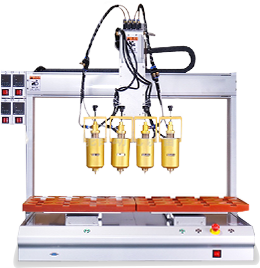
 +86-15993995054
+86-15993995054

 +86-15993995054
+86-15993995054


In an era where financial technology is rapidly evolving, children's mini self - service bank machines have emerged as a unique and engaging addition to the world of educational toys. These miniature replicas of real - life bank ATMs are designed to introduce children to the concepts of money, banking, and financial management in a fun and interactive way. They not only serve as educational tools but also as sources of entertainment, sparking children's curiosity and creativity. This comprehensive exploration will cover the various aspects of children's mini self - service bank machines, including their design, functionality, educational benefits, and the impact they have on a child's development.
Design and Functionality of Children's Mini Self - Service Bank Machines
Physical Design
Children's mini self - service bank machines are typically designed to resemble real - life ATMs, but with child - friendly modifications. They are often made smaller in size, suitable for a child's hands to operate. The body of the machine may be constructed from durable plastic materials that can withstand rough handling by children. The colors used are bright and appealing, with bold primary colors like red, blue, and yellow to attract children's attention.
The front of the machine usually features a screen - like display, which can be a simple LCD panel or a more advanced touch - screen interface depending on the model. Below the screen, there are buttons that mimic the functions of an actual ATM. These buttons may be labeled with symbols or simple words that are easy for children to understand, such as "Deposit," "Withdraw," "Check Balance," and "Print Receipt." Some machines also have a slot for inserting pretend bank cards, which are often included with the toy. This slot is designed to be wide enough for a child to easily insert and remove the card.
Functionality
1. Deposit Function
The deposit function on these mini bank machines is designed to simulate the real - life process of depositing money into a bank account. Children can use pretend banknotes or coins that come with the set. The machine may have a coin - slot or a bill - acceptor mechanism. In some models, the coins are inserted into a slot, and the machine makes a sound similar to a real ATM accepting coins. The pretend banknotes can be fed into a separate slot, and the machine may display an animation on the screen showing the money being processed. Once the deposit is made, the machine updates the "balance" on the screen, giving the child a sense of their growing savings.
2. Withdraw Function
The withdraw function allows children to "take out" money from their virtual accounts. When a child presses the "Withdraw" button, they may be prompted to enter a "PIN" (which is often a simple number code pre - set for the toy). After entering the correct PIN, the machine dispenses pretend banknotes from a slot. The amount of money withdrawn is deducted from the balance shown on the screen. This function helps children understand the concept of accessing their stored money when they need it.
3. Check Balance Function
The check - balance function is straightforward. When a child presses the "Check Balance" button, the machine immediately displays the current amount of money in their virtual account on the screen. This visual representation helps children keep track of how much money they have saved or spent, giving them a basic understanding of financial record - keeping.
4. Print Receipt Function
Some advanced models of children's mini self - service bank machines come with a print - receipt function. After a deposit or withdrawal, the child can press the "Print Receipt" button, and the machine will produce a small paper receipt. The receipt may show details such as the transaction type (deposit or withdrawal), the amount, and the new balance. This function not only adds to the authenticity of the play experience but also teaches children about the importance of keeping records of financial transactions.
Educational Benefits of Children's Mini Self - Service Bank Machines
Introduction to Banking Concepts
1. Bank Accounts
Using a children's mini self - service bank machine, children are introduced to the concept of having a bank account. They learn that a bank account is a place where money can be stored safely. The deposit and withdrawal functions help them understand that they can add money to their account when they have extra and take money out when they need it. This basic understanding is crucial as they grow older and start to manage their real - life finances.
2. ATM Operations
Children become familiar with the operations of an ATM. They learn how to insert a bank card, enter a PIN, and perform different transactions such as deposits and withdrawals. This knowledge can reduce their anxiety when they encounter real ATMs in the future. It also gives them a sense of independence and confidence in handling financial transactions.
3. Financial Transactions
The various functions of the mini bank machine teach children about different types of financial transactions. They understand the difference between depositing money (putting money into the account) and withdrawing money (taking money out of the account). The check - balance function helps them realize the importance of knowing how much money is available in their account before making a purchase.
Development of Math Skills
1. Counting and Basic Arithmetic
Handling pretend banknotes and coins to make deposits and withdrawals involves counting. Children need to count the money they are depositing or the amount they want to withdraw. This practice improves their counting skills. Additionally, when the machine updates the balance after a transaction, children can calculate the new balance in their heads. For example, if their balance was $10 and they deposit $5, they can figure out that the new balance is $15. This simple arithmetic practice helps strengthen their basic math skills.
2. Money Values
Children learn about the different values of banknotes and coins. They can distinguish between a $1 bill, a $5 bill, a quarter, a dime, and a nickel. The mini bank machine often requires them to use different denominations for transactions, which reinforces their understanding of the value of each currency unit.
Financial Literacy and Responsible Money Management
1. Saving Habits
The deposit function encourages children to develop saving habits. As they see their virtual balance grow with each deposit, they experience the satisfaction of saving money. Parents can use this opportunity to teach children about the importance of saving for future goals, such as buying a new toy or saving for a special event. The machine can be used as a tool to set savings goals, and children can work towards reaching those goals by making regular deposits.
2. Budgeting
The withdraw function can be used to teach children about budgeting. Parents can help children set a budget for their pretend spending. For example, if a child has $20 in their virtual account and they want to buy some toys, they need to decide how much money they can spend without running out of funds. This helps them understand the concept of living within their means and making wise financial decisions.
The Role of Children's Mini Self - Service Bank Machines in Play and Social Development
Imaginative Play
1. Bank Teller and Customer Scenarios
Children can engage in imaginative play using the mini self - service bank machine. They can take on the roles of bank tellers and customers. In a play scenario, one child can be the customer who wants to make a deposit or withdrawal, while another child acts as the bank teller, guiding the customer through the process. This role - playing not only enhances their understanding of banking operations but also allows them to use their creativity and imagination.
2. Business and Shopping Scenarios
The mini bank machine can also be incorporated into other play scenarios, such as running a pretend business or going shopping. For example, children can set up a pretend store, and the customers can use the money from their mini bank accounts to make purchases. This type of play helps children understand the relationship between money, shopping, and running a business.
Social Interaction and Cooperation
1. Sharing and Turn - Taking
When multiple children are playing with the mini self - service bank machine, they need to share the toy and take turns. This promotes social interaction and the development of sharing and turn - taking skills. They may also communicate with each other about the transactions they want to make, which improves their communication skills.
2. Group Problem - Solving
If there are issues with the machine, such as a pretend "error" message on the screen or a problem with the card - reader, children can work together to solve the problem. This group problem - solving activity helps them develop teamwork skills and learn how to collaborate with others to overcome challenges.
Market Trends and Future Developments
1. Integration of Technology
As technology continues to advance, we can expect to see more advanced features in children's mini self - service bank machines. Some future models may be connected to mobile apps, allowing parents to monitor their child's play and financial learning progress. The machines may also incorporate augmented reality (AR) or virtual reality (VR) elements to make the play experience more immersive. For example, children could use AR glasses to see virtual money being deposited or withdrawn in a more realistic - looking environment.
2. Sustainable and Eco - Friendly Designs
With the growing concern for the environment, there will likely be a trend towards using more sustainable and eco - friendly materials in the production of these toys. Manufacturers may use recycled plastics or biodegradable materials to make the mini bank machines. This not only benefits the environment but also teaches children about the importance of sustainability.
3. Expansion of Educational Content
In the future, children's mini self - service bank machines may come with more in - depth educational content. They could include mini - lessons on financial concepts, such as interest rates, inflation, and investment, presented in a simplified and age - appropriate way. Some machines may even have built - in quizzes or games to test the child's understanding of financial concepts.
Children's mini self - service bank machines are more than just toys; they are powerful educational tools that can have a significant impact on a child's development. Through their engaging design and functionality, they introduce children to banking concepts, develop their math skills, and foster financial literacy and responsible money management. They also play a crucial role in a child's play and social development, promoting imaginative play, social interaction, and cooperation. As technology continues to evolve and market trends shift towards more sustainable and educational products, these mini bank machines are likely to become even more advanced and effective in shaping the financial knowledge and skills of the next generation.